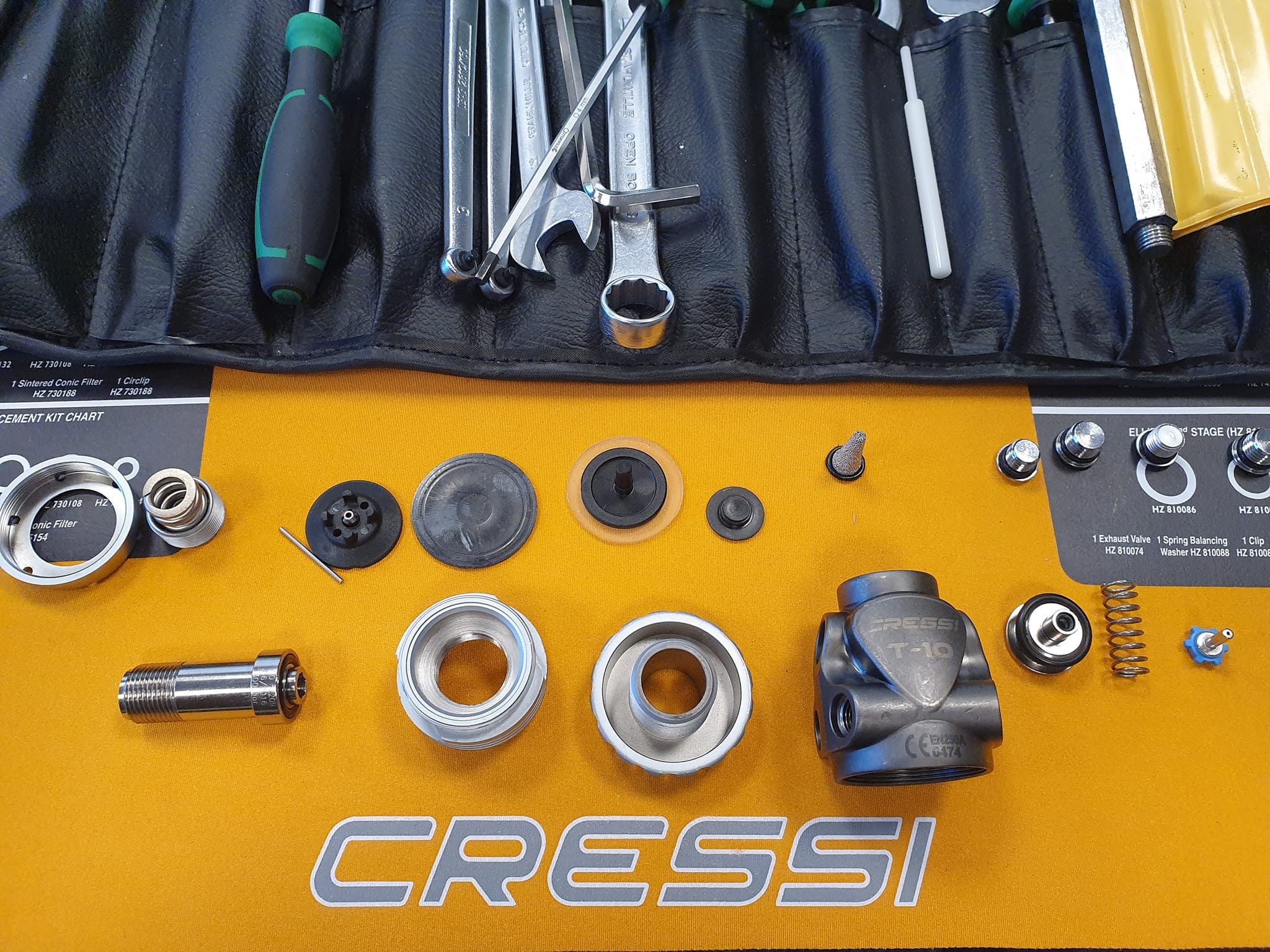Underwater diving is a challenging, interesting and rewarding profession that requires a high level of skill and knowledge. One of the most important roles in recreational and commercial diving is that of a dive equipment specialist. These diving equipment technicians - professionals are responsible for the maintenance and service of diving equipment, including diving regulators, life jackets. In this article, we will take a closer look at the responsibilities of a diving equipment specialist and explore the standard and maintenance procedures involved in servicing a diving regulator.
Table of Contents
How to apply for diving regulator maintenance, diving regulator service?
- Find out the name and model of the manufacturer of your diving regulator or diving BCD vest
- We accept for maintenance Cressi, Apeks and Aqualung regulators
- Find out how quickly original service repair parts are available
- Call a specialist at the phone number below
Diving regulator maintenance - "Dronelab" SIA, telephone tel. 220-77-202, e-mail: mail@dronelab.lv
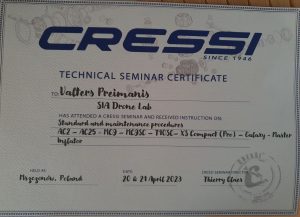
Responsibilities of a Diving Equipment Specialist
The primary responsibility of a diving equipment specialist is to ensure that all diving equipment is maintained and serviced to the highest possible standard. This includes everything from wetsuits and masks to scuba regulators and tanks. Some of the specific responsibilities of a dive equipment specialist may include:
- Regular inspections of diving equipment to ensure it is in good working order.
- Identifying and resolving malfunctions or problems with diving equipment, including diving regulators.
- Service and maintenance of diving equipment, including diving regulators, to ensure that it is safe and effective for use in commercial diving operations.
- Accurate records of all diving equipment inspections, maintenance and service activities.
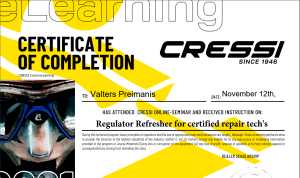
Annual service procedure of the diving regulator
One of the most important aspects of diving equipment servicing is dive regulator servicing. A scuba regulator is a device that allows divers to breathe air from a scuba tank while underwater. Therefore, it is important that diving regulators are properly maintained and serviced to ensure the safety of divers. A dive regulator should be serviced once a year or more frequently if it is a dive center.
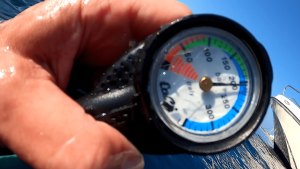
Standard procedures for diving equipment
Standard procedures for diving regulator service generally involve several key steps. These may include:
- Disassembling the regulator and cleaning all parts to remove any debris or contaminants.
- Inspect all regulator components for damage or signs of wear, including diaphragms, valve seats, and seals.
- Replacement of any worn or damaged parts, including worn or damaged diaphragms, valve seats or seals.
- Assembling and testing the regulator to make sure it is working properly.
- A dive regulator should be serviced once a year or more frequently if it is a dive center.
- It is important to take care of the dive regulator after each dive, screw on and use the dust cap on a daily basis, rinse the regulator in fresh water both first and second degree.
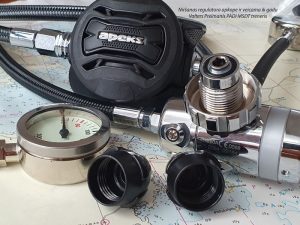
Diving maintenance procedures
In addition to standard diving regulator service procedures, there are several maintenance procedures that can help extend the life of diving regulators and ensure their safe and efficient use. These may include:
- Replace all moving parts of the regulator regularly to prevent corrosion and wear.
- Store regulators in a dry, cool place to prevent moisture build-up.
- Avoid contact with corrosive chemicals or solvents that may damage the regulator.

Learn "PADI Equipment Specialist" skills in the specialty
Don't miss a dive because of a minor problem with your diving equipment. Whether it's a missing o-ring, a torn wetsuit seam or a torn flipper strap, the PADI Equipment Specialist course teaches you basic repairs and maintenance. You'll also learn more about how your equipment works, making you more comfortable and better equipped to take care of your investment.
If you are at least 10 years old and certified as a PADI (junior) diver or higher, you can enroll in the Equipment Specialist course – “PADI Equipment Specialist“.
Contact us about the courses by writing a message or by writing using contact form
The responsibilities of a dive equipment specialist are essential to the safe and efficient use of diving equipment in commercial diving operations. By following standard dive regulator service and maintenance procedures, dive equipment specialists can help ensure the safety of divers and the success of commercial diving operations. And let's not forget, they can also wear those cool wetsuits and pretend to be superheroes in the water.
References
- Maintenance of diving equipment (DIVING)
- PADI Equipment Specialist (DIVING)
- How to care for a diving and diving mask (DIVING)
- Underwater safety and regular maintenance of equipment
- “Diving Equipment Specialist” – Professional Association of Diving Instructors (PADI)
- "Maintenance and servicing of diving equipment" - Health and Safety Executive (HSE)
- "Diving Regulator Maintenance" - "Scuba Diving" magazine.

